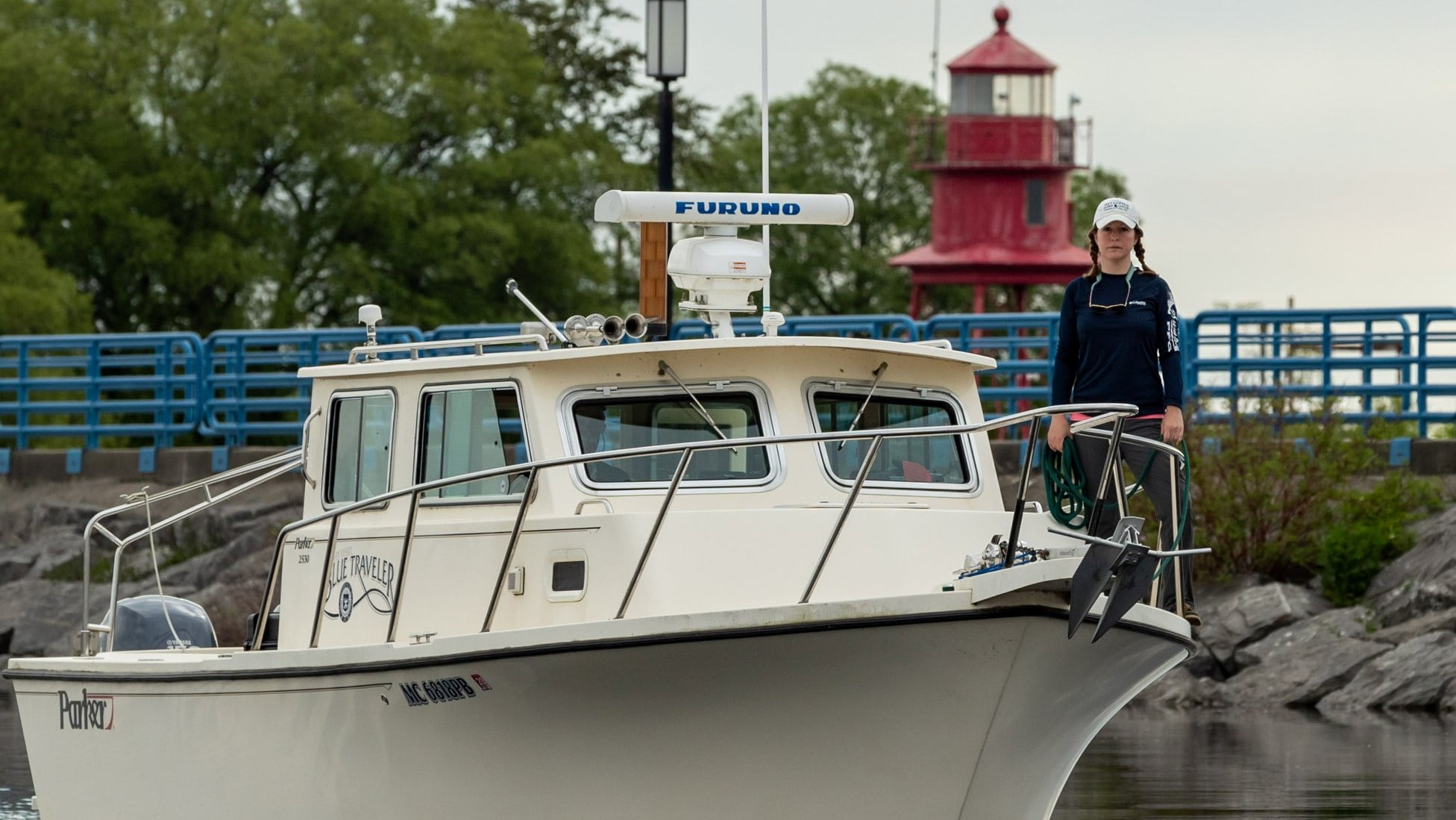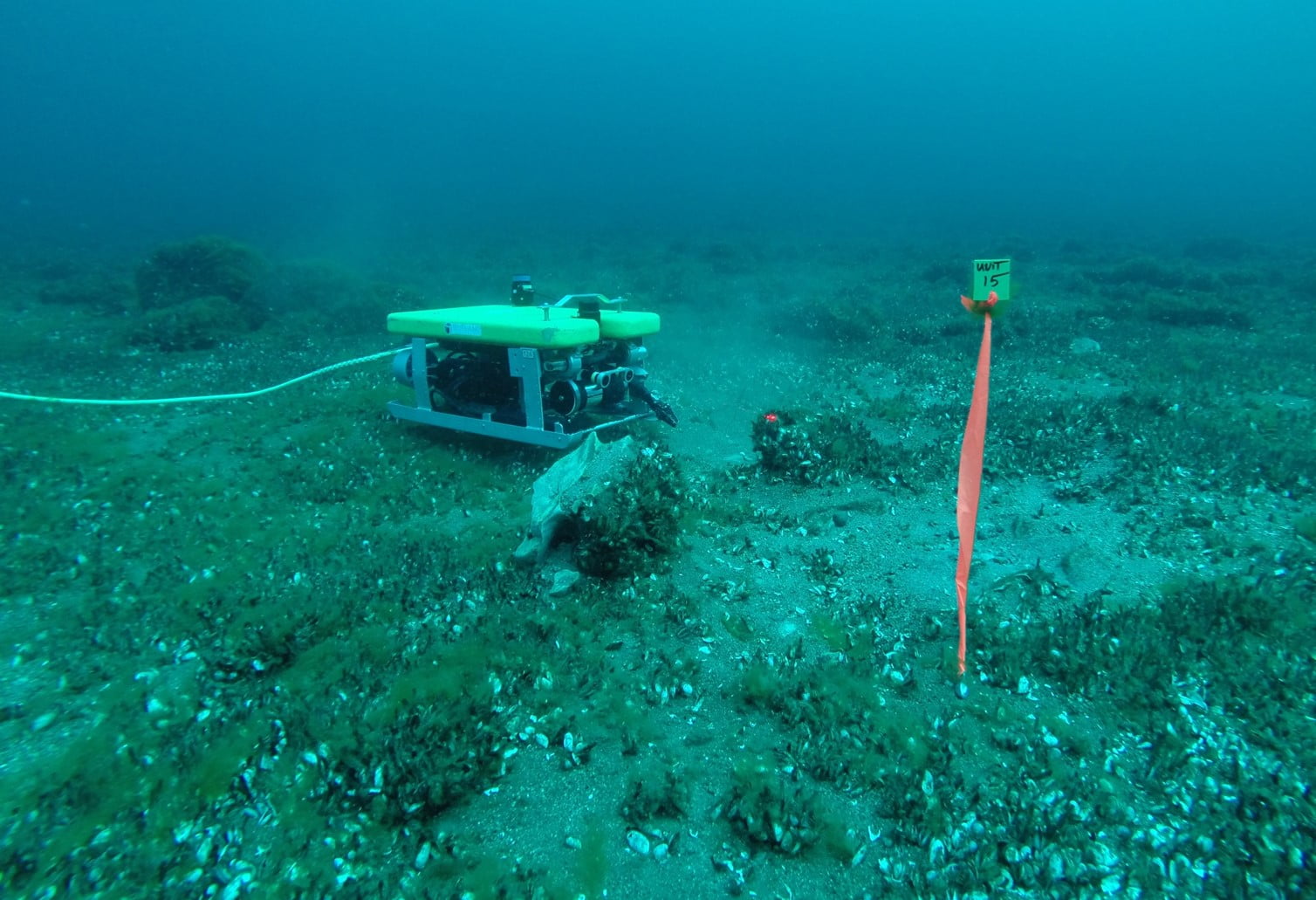UTA anthropologist studies ancient submerged settlements in Great Lakes
Water covers nearly three-quarters of Earth’s surface, and one researcher at The University of Texas at Arlington is committed to uncovering the history preserved beneath it.
While most underwater archaeologists specialize in the study of shipwrecks, Ashley Lemke, assistant professor of anthropology at UTA, explores sites that were once on dry land and inhabited by people.

Lemke, who describes herself as a prehistoric underwater archaeologist, seeks to understand the social and economic organization of caribou hunters 9,000 years ago by surveying and excavating ancient hunting sites submerged beneath the Great Lakes.
“There’s a sunken forest in Lake Huron, so as I’m discovering tools and hunting structures, I’m seeing the landscape as these people saw it 9,000 years ago,” said Lemke, who serves on the Advisory Council on Underwater Archaeology Board of Directors. “I’m still in awe that the last person to see what I’m seeing was alive 9,000 years ago.”
Lemke received funding from the National Science Foundation to study a land ridge she identified as a potential travel route for hunters and migrating caribou. Her work there has offered insight into prehistoric seasonal hunting and details about how people from centuries past lived and operated.

When first approaching a site, Lemke uses sonar to map the underwater landscape, a skill she says she never imagined needing when she decided to pursue anthropology and archaeology. She also deploys remote-operated vehicles that relay live video.
Lemke is using another NSF grant to use virtual reality technology to show indigenous people in Alaska what the landscape looked like when their ancestors lived on it.
“They have great respect for their ancestors’ way of doing things,” she said. “They want to show their grandchildren about hunting the way it has traditionally been done. So we made it a virtual reality video game so they could be immersed in the landscape as it was 9,000 years ago.”
Lemke and her collaborators also are exploring the use of technology to create an oral history record. Elders will be able to put on VR headsets, and the program will record their tracks, what they see and what they’re saying about the land as they walk over it.
Later this summer, Lemke will travel to North Carolina to look for evidence of prehistoric peoples in the Atlantic. A Research Enhancement Program grant from UTA supports the project.

“There is an abundance of knowledge and insight to be uncovered through archaeological work—both on land and underwater,” said Beth Anne Shelton, chair of the UTA Department of Sociology and Anthropology. “It is important we preserve what is discovered so we can pass our history and lessons learned to generations to come. Ashley is pursuing unique, innovative ways to do this. She’s a wonderful representation of the pioneering spirit of UTA research.”
Lemke says there is much to learn from the depths of the water about the future of mankind.
“The sites I study are underwater due to changes in our climate, and we’re facing similar issues now with rising sea levels and a changing climate,” Lemke said. “With underwater archaeology, we can study the past and see how people adapted or responded as the land around them changed.”